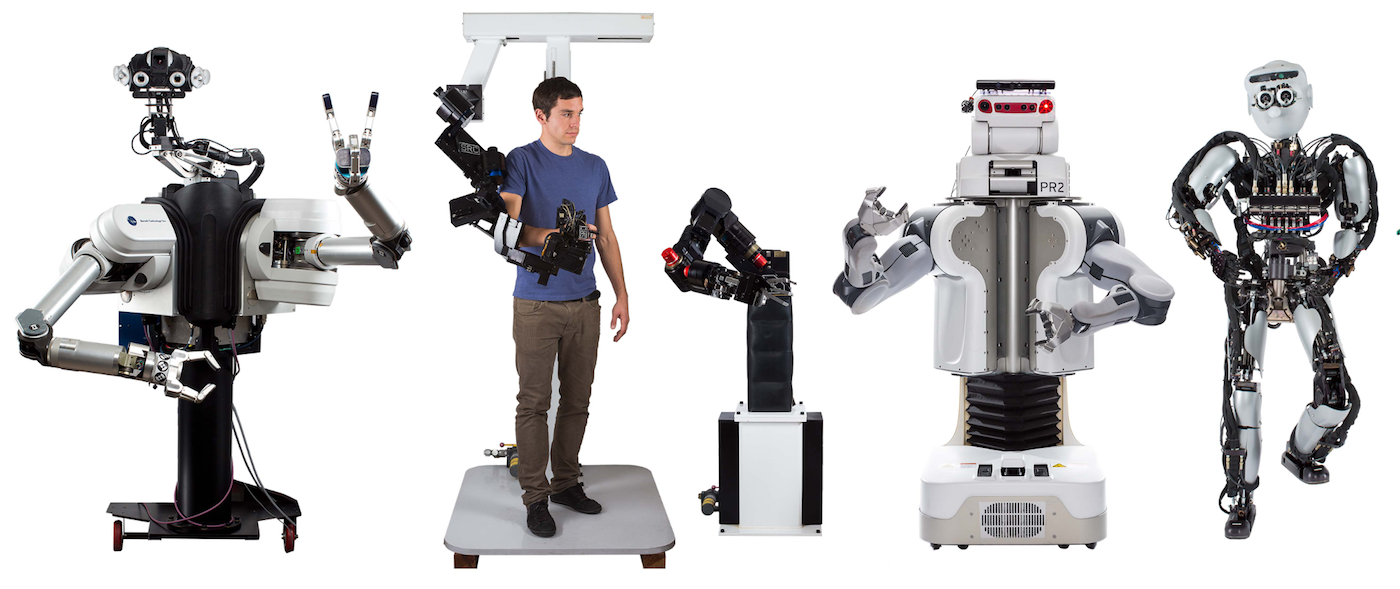CS 326 - Topics in Advanced Robotic Manipulation
 |
 |
Course Description
This course provides a survey of some of the most important and influential concepts in autonomous robotic manipulation. It includes classical concepts that are still widely used and recent approaches that have changed the way we look at autonomous manipulation. We cover approaches towards motion planning and control using visual and tactile perception as well as machine learning. This course is especially concerned with new approaches for overcoming challenges in generalization from experience, exploration of the environment, and learning representations so that these methods can scale to real problems.
This course will also prepare students for conducting robotic manipulation research. As such, assigments and class activities are designed to help students hone their skills in critically reviewing technical papers and designing research projects. Every class, students will read and review one foundational paper and debate its strengths and weaknesses. Additionally, students will present tutorials on papers that supplement the foundational papers. Finally, students will propose an original research project on robotic manipulation.
Students are recommended to have taken courses covering at least one of the following subjects: Robotics, Computer Vision, Machine Learning, Control, Filtering and Recursive Estimation, Optimization. Recommended prerequisites: CS131, CS223A, CS229 or equivalents.
Course Information
Instructor: Jeannette Bohg
Location: Lathrop 299
Meeting times: Tue, Thu 10:30 - 11:50 AM PT
Units
CS326 is offered for 3-4 units for either a letter grade or credit/no credit. Students registering for the 4 unit version of the course will be required to spend at least 30 additional hours implementing their course project proposal and preparing the paper for a peer-reviewed conference submission (actual submission is not required).
Expected Learning Outcomes
As part of this course, students will:
Obtain a broad fundamental understanding of concepts in autonomous, robotic manipulation.
Read, review and critique technical papers, design a tutorial, present a tutorial and debate once for the Pro and Con side (assessed by written reviews, course presentation and debates).
Become familiar with the open research questions in the subject area, pose new research questions, and write a proposal (assessed by project proposal and presentation).
Expected Work Required by Students
The course is structured around foundational papers and the supplementary tutorial papers. In the course, each student will:
Evaluate each foundational paper in a short review
Present one tutorial paper + background in a 10-15min tutorial
Take the Pro side for an approach taken in a paper of choice in a class debate
Take the Con side for an approach taken in a paper of choice in a class debate
Develop a research proposal that adresses an open research question identified during the course
Review the research proposal of one of your peers
(4 units) Implement the project proposal and prepare a paper for a peer-reviewed conference submission
Reading Material
The course sessions will review papers that are available for free or through Stanford's subscription. To access readings while off campus, connect to the Stanford network via VPN.
Students with Disabilities
Students who may need an academic accommodation based on the impact of a disability must initiate the request with the Office of Accessible Education (OAE). Professional staff will evaluate the request with required documentation, recommend reasonable accommodations, and prepare an Accommodation Letter for faculty dated in the current quarter in which the request is made. Students should contact the OAE as soon as possible since timely notice is needed to coordinate accommodation (phone: 723-1066,OAE website)